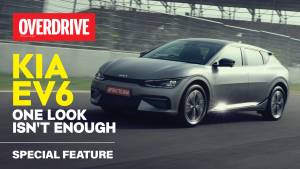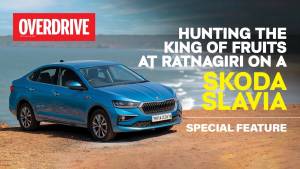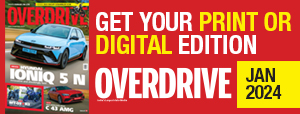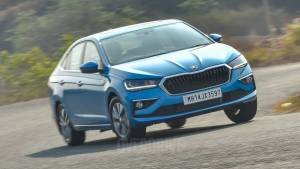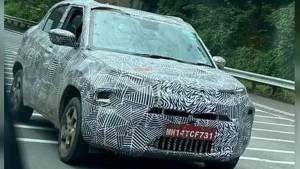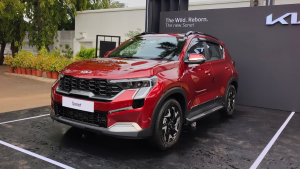Honda H'ness CB350 vs Royal Enfield Meteor 350, Classic 350 & Benelli Imperiale 400
If you are a biker then the environment around you will tell you that neo-retro motorcycles are quite a rage at the moment. That environment is a product of the Royal Enfield lineage. And motorcycles like the CB and Imperiale are a product of that environment. Honda has been working openly on its Royal Enfield rival for a long time now, but that has also allowed RE enough time to develop an all-new 350 platform which debuts with the Meteor 350. It is bound to spawn a new Classic 350, but until that happens we have the original on this test, because, well, it kick-started this modern-retro genre. The Imperiale 400 proved that the Classic is ageing and there is room in the market for a nicer motorcycle from even an unassuming brand like Benelli - a room that looked like Jawa would capitalise on, but the brand has failed to meet the demand of the consumer, eventually making people shy away to other options. In fact, it's so scarce that we couldn't get one for this test either, so we let it be. Even the CB350 wasn't easy to come by, but OD reader and friend Rohan Shrivastav came to the rescue. He chose this motorcycle over anything else because Honda promises to bring reliability and low cost of ownership to this segment. For those very reasons, the entry of Honda certainly has RE worried, but since Honda will be battling RE's cult-following more than a particular motorcycle, it will be the smaller players like Benelli and Jawa who are likely to feel the heat the most, provided Honda sorts out its sales and distribution strategy. Read on to know why.

Design
In Honda-speak "CB" stands for City Bike and while this prefix has been around since the 60s, the CB350 is an ode to the 70's styling cues. In recent times, custom bike builders pay big money to get a Honda that looks like this - because this design, colours and silhouette have a big legacy and this motorcycle and its expected twin-cylinder counterpart are likely to democratise Honda's iconic design. The Highness takes all of those bits and adds pops of new-age design like the LED lamps and modern switchgear, to the hybrid instrumentation and turn blinkers that also double up as running lamps, like on the Africa Twin. The frame begins with a single downtube and splits into two pipes below the engine like the yesteryear CB350 Super Sport, but new-age engineering gives it a relatively modern sub-frame design. There are no fork sleeves, sprung seats or the iconic boxy tank of the 60s to complete that retro look, but the CB350 looks unique and yet period-correct. It even proudly puts the retro Honda lettering on the tank instead of the new winged logo to tell India that its a Honda - but if was buying I would get the retro Honda wings and lose the H'ness badge. The upswept exhaust canister adds a dash of sportiness and the 19/18-inch combo for the wheels, coupled with chrome fenders hit the sweet spot between modern and retro. The stance of the CB is that of a standard classic, but the lean design and the sheer number of empty spaces on the motorcycle mask the fact that the Honda is fairly large and that it sits on the seriously long-wheelbase - more than even the Meteor 350, which happens to be a cruiser.


Its cruiser body style is the reason why the Meteor is the only one here with forward-set foot controls and it has relatively fatter tyres that add to its handsome stance. Benefiting from the manufacturing and quality processes set in place by Royal Enfield for the premium 650cc twins, the Meteor presents a stark difference between itself and the ageing Classic 350 in terms of build quality and comes surprisingly close to the fit and finish seen on the Honda. In fact, it has better consistency of the textures used around the bike and it also boasts of a better design for its switchgear, which looks like it came straight out of the 60s. RE has even cleverly inscribed its name and legacy on the switches so you won't retro-fit it on any other brand of motorcycle. With lesser gaps than the Honda between its double-downtube chassis, the sleek bodywork and the upright engine, the Meteor looks a lot more homogeneous and tightly packaged, but in today's times, its cruiser styling may not be as appealing as the standard classic.

That is why the Classic 350 still rules the roost. From the classic Black and Chrome to funky new colour schemes year on year has almost made it a collectable for RE purists. It is a formula that has worked wonders for the model line, while the competition is still playing catch up with the original design. It unbeaten styling cues like the peak on the headlamp, the instrumentation mounted within the headlight assembly, the angled front axle or the pea-shooter exhaust contribute towards making it the most period-correct design for a modern-retro and that is what makes it to appealing for masses even today. Of course, there will be a new Classic 350 that will come out with better quality and the new engine and chassis from the Meteor, but it unlikely that Royal Enfield will mess with this design or silhouette.


The Benelli Imperiale benchmarks against the Classic, and though it's wheelbase is only 1mm short of the Honda, it looks the largest of these four. If the size of the bike matters to you, the Imperiale appears to be in the league of the Bonnevilles and the Nortons of the world. However, in achieving the demeanour of a large motorcycle, the Imperiale is the only one to tip the scales beyond 200kg and that weight is evident when you have to manoeuvre the bike on your feet. While its wire-spoke wheels can't accommodate tubeless tyres like CB or the Meteor, it simply goes well with the design of the motorcycle.


In fact, the Benelli is the best looker of this lot, but the fit and finish of its materials aren't up to the mark and certainly justify its tall price. Furthermore, the accessories it comes fitted it are below par. In comparison, the accessories on the Royal Enfield feel far well thought of and better in terms of quality and fit. In fact, RE also claims to test all its accessories as extensively as the motorcycle itself, which adds to the peace of mind. The Honda that came to us was bone stock, so we can't comment on the accessories at the moment.
The sound
This is one of the few motorcycle segments where the sound of the motorcycle plays as important a role as the design. In fact, the iconic thump of the RE or the "dug-dug" sound as we locals call it, has been the benchmark to beat. The Benelli doesn't quite get there and the Meteor comes close but falls prey to the BSVI requirements and adds the wheezing note to the soundtrack. The Honda comes the closest to recreating that thump even with the new-age emission norms and yet manages to have its own distinctive character that is quite likeable.

The engines
It is not just the sound of an Enfield that the CB tries to ape - even the mill that produces it is an upright low-revving, long-stroke single-cylinder engine. It is tuned for marginally higher output and puts out all of its 30Nm of torque at a low 3,000rpm. But despite what the figures would suggest, it is not as forgiving to wrong gear selection. The way the gearbox is tuned, the CB needs to be at relatively higher revs to make good progress - whether you are riding in the city or on the highway - which means you also either keep the engine on the boil or change gears more frequently than the others. The engine revs quicker and more freely than its peers though, so dialling in a higher engine speed isn't a worry. Though it's not as racy as the CB300R's engine, the performance of the CB350 is brisk and you can cruise happily between 100-110kmph.
That cruising speed sounds only marginally higher than its competitors, but makes the performance a lot more likeable when you are in the mood. It will ride past 130kmph too if you intend so, but the engine starts showing reluctance beyond 120kmph. At speeds lower than that the engine is creamy smooth like a typical Honda and you will love the lightness of the clutch which the others simply can't match. But RE owners moving to the Honda will find the thump artificial with no vibrations to go with it. Personally, I would have loved to hear the raspy note of a parallel twin instead - like the CB350 of the seventies - but the Highness isn't a reincarnation of that motorcycle - it is a competitor to the Royal Enfield and compared to the Meteor it does a far better job of retaining the thump at higher speeds as well.

That said, after riding the CB and the Meteor back to back, it makes sense as to why Royal Enfield insists on having heavier engine components. The metallic clunk or the low-speed vibrations emulate the feel of an old-school single and that is important for the character of these motorcycles. The Meteor's engine has far better tractability in the city compared to the Honda, and it pulls overtakes better than the Honda at double-digit highway speeds, without having to rev high. The Meteor's playground is between 40-90kmph and beyond that, the engine starts feeling strangled. It will reach 120kmph when you push it, but 90kph is its cruising sweet spot.

Ride the Meteor and the Classic 350 back to back though and you realise how much of an advancement the new engine is. The older block loves playing in the 40-80kmph zone too, but this ageing player feels lethargic and crude. That crudeness has its charm in today's times too and many continue supporting it, but research says that the Classic 350 is the first Royal Enfield for many which mean they probably haven't experienced any other motorcycle -and if you are one of those, you will be pleasantly surprised at how smooth and likeable the new age 350 from RE and Honda are.

The Benelli flaunts size even with its engine. It's the highest capacity motor in the segment with an output comparable to the Honda and comes with four-valves instead of two like the other three. And while it wowed us in the past with its almost parallel-twin level of smoothness and its ability to briskly reach triple-digit speeds, its superior performance figures were short-lived. The new 350s from RE and Honda now outclass this 400 in outright and in-gear acceleration. But if you want higher cruising speeds in the zone of 110-120kmph, the Imperiale is the one to choose. It putters around town quite nicely too and it is fairly fuel-efficient as well but the Meteor is better in both departments.

Speaking of fuel economy, the CB350 is the most efficient motorcycle of this lot and by a big margin and that gives it a superior riding range too. For those who want to squeeze more out every drop of fuel, the CB350 also comes with an Eco Mode which noticeably dulls the engine response in favour of better efficiency.

Ride and handling
The ride quality of the Honda is relatively firm at city speeds and joints in the roads or ruts and sharp bumps are felt quite strongly. The ride becomes better as speeds rise, but the CB doesn't feel very plush. The handling dynamics are surprisingly good and though its scrapes it's pegs often, the CB feels stable through the corners and has a sporty edge over its rivals. But since the revs drop quickly on this engine, you ensure that you maintain a steady throttle through the corner to avoid the engine running out of breath and necessitating awkward gear shifts. The highway stability is excellent too and its relaxed ergonomics make it an easy rider for the city as well as long-distance use and its short turning radius is something that many will appreciate. Pillion comfort is superior on the Honda too. Removing the seats requires tools, ironically, so does the toolbox cover which hides the tools.

The Meteor has a plush ride and is easily the comfiest of this lot. Its large seat complements the ride very well and despite the soft suspension setup, the Meteor handles exceptionally well. It's composure through corners and high-speed stability award it the same points as the CB in the ride and handling department, but it's forward-set footpegs and cruiser ergonomics limit its scope around winding or bad roads. If I had to ride 500km in a day on an open highway, between these four I would choose the Meteor, but if I had to ride into the mountains, the CB would be my choice - though its ground clearance would be a worry.
![]()

The Classic 350 won't even blip on my radar because I find it very uncomfortable and a backbreaker. It's ergonomics work for the city but not so much for long-distance comfort - though many riding communities will disagree with me. It is a neutral handler and very composed around bends and for the kind of lowly speeds it does, it never feels unnerving no matter what the skill level of the rider is. The engine falls out of the powerband far too often though - which again highlights why the Meteor is the better Royal Enfield at the moment.

The Imperiale carries better corner speed in comparison but the suspension setup it too soft in the front and awkwardly stiff at the rear even at its softest setting and that makes it squirm through the corners unsettle easily over bumps. The overtly soft seat springs can at times make it challenging for the rider to maintain their riding posture. Even on the highway, the mismatch in the suspension setup is evident - where the front tackles a bump or undulation well, while the rear refuses to follow suit. Add to it the long turning radius and the Imperiale becomes quite cumbersome for city use.

Safety
What dampens the mood further is the inconsistent braking feel on the Imperiale. Like it's handling, even the braking on the CB350 feels sharp and precise. There isn't a pronounced dive like in the Imperiale, nor does it feel spongy like either of the Royal Enfield. Though it doesn't have ride-by-wire, the CB also gets traction control which may not sound necessary for a 21PS motorcycle, but for our tricky road conditions where gravel, wet patches, or uneven fixtures tend to take you off guard, all the safety systems you can have are welcome. Furthermore, on the rare occasions when the traction control did kick in, it did not feel intrusive, unlike most low-cost systems.

Verdict
As the points stack up, the Honda CB350 amasses the highest score, which makes it the clear winner of this test. While I'm sure that the Classic 350 is still going to continue selling in big numbers, there is a huge difference in the overall scores between the Classic and the CB and that shows just how much better the CB is and how well it has been benchmarked against its arch-rival. If you are shopping for a modern retro in this space, the CB is our choice between the two.
Between the CB and the Meteor though, there is a very small gap in the points which tells you how close Royal Enfield is to new-age refinement and tech. While choosing between the two, make sure you take a look at the points table to understand which of these parameters is important to you to make a more informed buying decision.

Since we are talking about buying decisions, we will go a little beyond evaluating which is the better product. Honda will only sell you the CB through the Big Wing dealerships, while the Meteor can be configured and bought over an app and then there is the wide sales, spares and service support which ensures better peace of mind no matter where you want to ride and travel. Therefore, while the CB is the better product of this test and is likely to be more reliable too, it may or may not be the better buy depending on where you stay and where you intend to ride it - so choose accordingly.
Starts Rs 5,50,000
500cc
6-Speed
47.50
46.00
25.64 Kmpl
Starts Rs 1,99,000
374cc
5-Speed
21.00
29.00
35.39 Kmpl
Starts Rs 1,75,000
349cc
5-Speed
20.20
27.00
-NA-
Starts Rs 1,85,000
348cc
5-Speed
21.07
30.00
-NA-
Related Stories
Top Stories
Latest Videos
Most Popular
- Maruti Suzuki Fronx Drive Feature: Switch to Plan B
- Ford India to make a comeback in 2025? New-Gen Endeavour design patented in India
- Maruti Suzuki Brezza emerges as the most successful SUV of 2023
- Nissan Magnite EZ-Shift review - is the AMT any good?
- Hyundai Creta facelift bookings open for token amount of Rs 25,000




